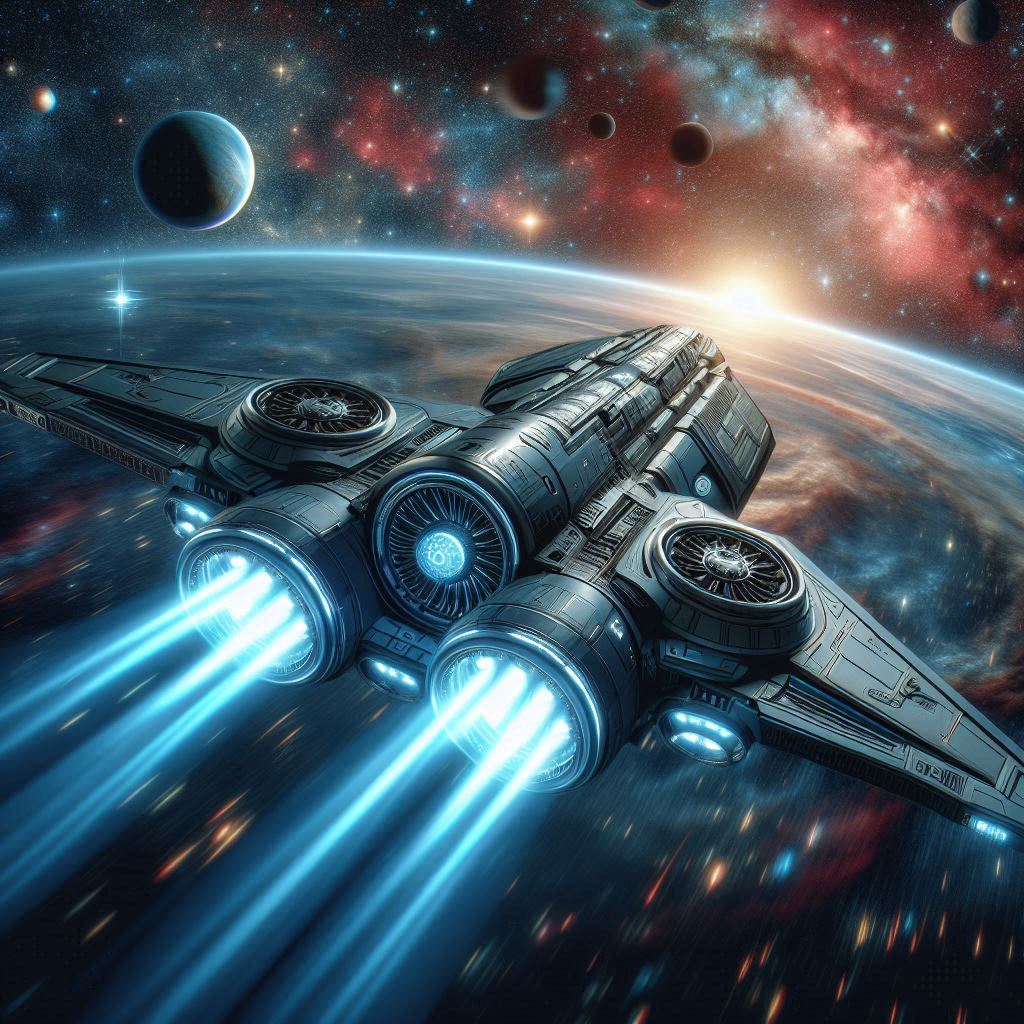
Aerospace - Introduction to Propulsion

Saurabh Kumar Gupta
Mechanical Engineer
FREE
9 already enrolled!
Advanced course for professionals

Aerospace - Introduction to Propulsion
Trainers feedback
0
(0 reviews)
Saurabh Kumar Gupta
Mechanical Engineer
Course type
Watch to learn anytime
Course duration
2019 Min
Course start date & time
Access anytime
Language
English
This course format through pre-recorded video. You can buy and watch it to learn at any time.
Why enroll
Completing the 'Aerospace - Introduction to Propulsion' course can significantly enhance your career prospects in the aerospace industry. With a solid understanding of propulsion systems, you'll be well-positioned for roles such as Aerospace Engineer, Propulsion Systems Engineer, or Research and Development Engineer. You'll also be competitive for careers in related fields like defense, automotive, and energy. Additionally, this course provides a foundation for advanced studies or certifications in aerospace engineering, leading to senior roles like Technical Lead, Systems Engineer, or Program Manager. Unlock new opportunities and propel your career forward with this comprehensive introduction to propulsion systems.
Course content
The course is readily available, allowing learners to start and complete it at their own pace.
Aerospace - Introduction to Propulsion
40 Lectures
2019 min
What do you mean by propulsion ?
45 min
First Flight of Powered Aircraft
45 min
Scramjet Engine
51 min
Laws of thermodynamics
67 min
Continumm in fluid mechanics
55 min
Stream lines and path lines
49 min
Compressible fluid flow
51 min
Flow regimes
57 min
Stagnation Point
49 min
Characteristics of Mach Number
53 min
Convergent Nozzle
49 min
What do you mean by shocks?
53 min
Oblique Shocks
49 min
Example
48 min
Constant Area 1D Flow With Friction
50 min
Combustion
47 min
Chemical Analysis
52 min
Adiabatic Flame temperature
54 min
Procedure of Determining Equilibrium Composition
49 min
Various Combustion Modes
52 min
Analysis of ID Combustion Wave
54 min
Structure of ID Premixed Flame
57 min
Flame thickness
52 min
Minimum Ignition Energy
53 min
Phenomenological Analysis
42 min
Engine Performance Parameters
42 min
Air Breathing Engine Cycle
57 min
Ramjet Engine
43 min
Summary - Ramjet Engine Analysis
56 min
Turbofans
51 min
Types of turbofan configuration
54 min
Real Cycle Analysis
44 min
Turbojet Engines
47 min
Examples
41 min
Turboprep Engines
49 min
Chemically Powered Rocket Engines
51 min
Fundamentals of Aerospace Propulsion
40 min
Solid Propellants
55 min
Types of Solid Propellant Engines
50 min
Atomization
56 min
Course details
This course provides a comprehensive introduction to the fundamentals of propulsion systems used in aerospace engineering. Students will learn about the principles of propulsion, types of propulsion systems, and their applications in aircraft, spacecraft, and missiles.
Source: nptelhrd (YouTube Channel)
Introduction to Propulsion by Dr. D.P. Mishra, Department of Aerospace Engineering, IIT Kanpur.
Course suitable for
Aerospace Mechanical
Key topics covered
- Understand the fundamental principles of propulsion and thrust
- Identify and describe different types of propulsion systems
- Analyze the performance of propulsion systems
- Apply propulsion concepts to real-world aerospace applications
- Stay updated with the latest developments in propulsion technology
Why people choose EveryEng
Industry-aligned courses, expert training, hands-on learning, recognized certifications, and job opportunities—all in a flexible and supportive environment.
- Industry Veteran
- Trainer Review

Saurabh Kumar Gupta
Mechanical Engineer
Questions and Answers
A: Subsonic flight refers to speeds below the speed of sound (Mach 1), where airflow over the aircraft is generally smooth and continuous. Transonic flight occurs near Mach 1, where flow patterns become mixed, with both subsonic and supersonic airflows, often causing shock waves that increase drag. Supersonic flight exceeds Mach 1, characterized by shock waves and significant aerodynamic changes. These regimes affect propulsion design; for example, supersonic aircraft require engines with variable geometry inlets and afterburners to handle changing airflow conditions and provide sufficient thrust. More details can be found at https://www.grc.nasa.gov/www/k-12/airplane/superson.html.
A: Afterburning involves injecting additional fuel into the exhaust stream of a jet engine after the turbine section, combusting this fuel to increase the temperature and velocity of the exhaust gases. This process produces a significant boost in thrust, which is especially valuable for supersonic flight and combat aircraft. However, afterburners are very fuel-inefficient and increase the thermal stress on engine components, which limits their duration of use. For a comprehensive explanation, consult https://aviation.stackexchange.com/questions/17079/what-is-the-purpose-of-an-afterburner.
A: Specific impulse (Isp) is a measure of the efficiency of rocket engines, defined as the thrust produced per unit weight flow of propellant consumed (usually seconds). It essentially indicates how effectively a rocket uses its propellant: higher Isp means more thrust for the same amount of propellant, resulting in improved performance and longer mission durations. Specific impulse is crucial when designing propulsion systems for space missions where fuel mass is a critical constraint. For further reading, visit https://www.grc.nasa.gov/www/k-12/rocket/IandI.html.
A: A ramjet engine has no moving parts like compressors or turbines; it relies on the engine's forward speed to compress incoming air through ram pressure before combustion. Due to this, ramjets only operate efficiently at supersonic speeds (typically above Mach 2). Turbojets, on the other hand, use compressors and turbines to actively compress air and can operate across a wider range of speeds, including subsonic. Ramjets are often used in missiles and experimental high-speed aircraft. More information is available at https://www.grc.nasa.gov/www/k-12/airplane/ramjet.html.
A: Jet propulsion is based on Newton's third law of motion, which states that for every action, there is an equal and opposite reaction. In a jet engine, air is taken in, compressed, mixed with fuel, and ignited. The high-speed exhaust gases are expelled out of the back of the engine, generating thrust that propels the aircraft forward. For a detailed explanation, you can refer to NASA's beginner guide on jet propulsion: https://www.grc.nasa.gov/www/k-12/airplane/propth.html.
A: Propulsion systems for space vehicles differ significantly from those for aircraft because space vehicles operate in a vacuum and must carry both fuel and oxidizer onboard. Challenges include the need for extremely high specific impulse to maximize efficiency, thermal management in the absence of atmospheric cooling, and handling microgravity conditions. Unlike jet engines that rely on atmospheric oxygen, rocket engines need to be self-contained. Additionally, weight and reliability are critical factors. For an in-depth discussion, see https://www.nasa.gov/directorates/spacetech/niac/2015_Phase_I_Phase_II/High_Performance_Space_Propulsion.
A: The compressor in a jet engine increases the pressure of the incoming air before it enters the combustion chamber. By compressing the air, the compressor enhances the efficiency of combustion, allowing the fuel to burn more completely and releasing more energy. This increase in pressure is crucial for generating high-velocity exhaust gases that produce thrust. Compressors can be axial or centrifugal types, and modern engines typically use multi-stage axial compressors for better efficiency. For more details, see https://www.grc.nasa.gov/www/k-12/airplane/compress.html.
A: Turbofan engines differ from turbojet engines primarily in the way they generate thrust. A turbojet produces thrust by expelling all the air through the turbine and nozzle, whereas a turbofan uses a large fan at the front that pushes a significant portion of air around the engine core (bypass air). This bypass air generates additional thrust more efficiently and quietly, especially at subsonic speeds. Consequently, turbofans are more fuel-efficient and quieter than turbojets. More information can be found at https://www.grc.nasa.gov/www/k-12/airplane/turbfan.html.
More from Same Author
- Technical Courses
- Articles
997
E-Learning
Unlimited access
Beginner
E-Learning
Unlimited access
Pre-recorded videos
741
15
E-Learning
Unlimited access
Beginner
E-Learning
Unlimited access
Pre-recorded videos
7285
140
E-Learning
Unlimited access
Beginner
E-Learning
Unlimited access
Pre-recorded videos
Earning and Growth option in same Industry Domain
- Pre-recorded
- Online live session
- Offline
- Articles
3841
4
E-Learning
Unlimited access
Beginner
E-Learning
Unlimited access
Pre-recorded videos
5305
7
E-Learning
Unlimited access
Beginner
E-Learning
Unlimited access
Pre-recorded videos
576
E-Learning
Unlimited access
Intermediate
E-Learning
Unlimited access
Pre-recorded videos
More Training & Development option to expand your reach
- Technical courses
- Soft-skills courses
- Seminars
- Articles & Blogs
302
Online
Live courses
December 27
30 Hrs
Advanced
Online
Live courses
Interacting with trainer
541
Online
Live courses
January 24
45 Hrs
Advanced
Online
Live courses
Interacting with trainer
245
Online
Live courses
February 21
30 Hrs
Advanced
Online
Live courses
Interacting with trainer






















